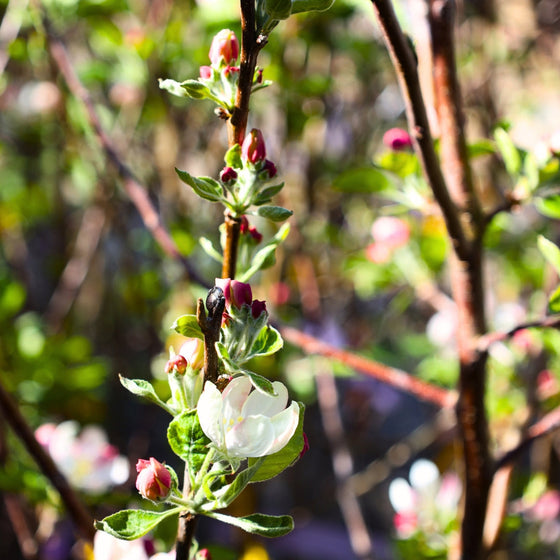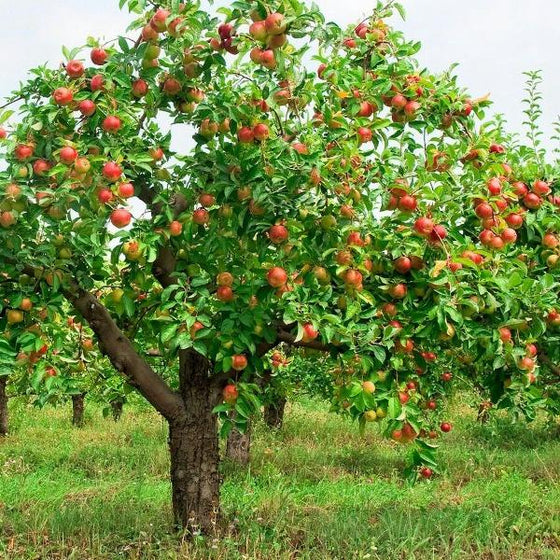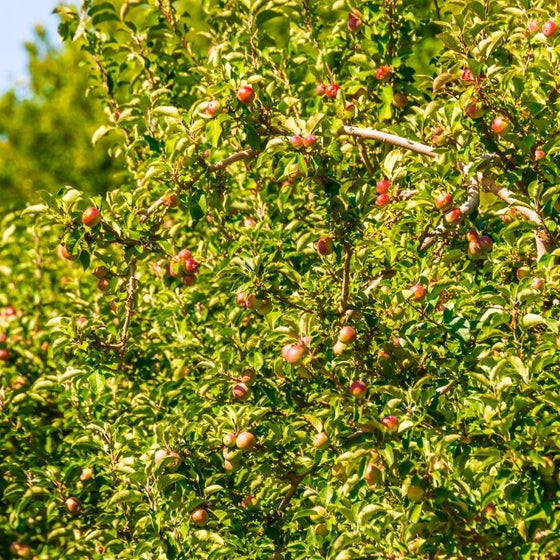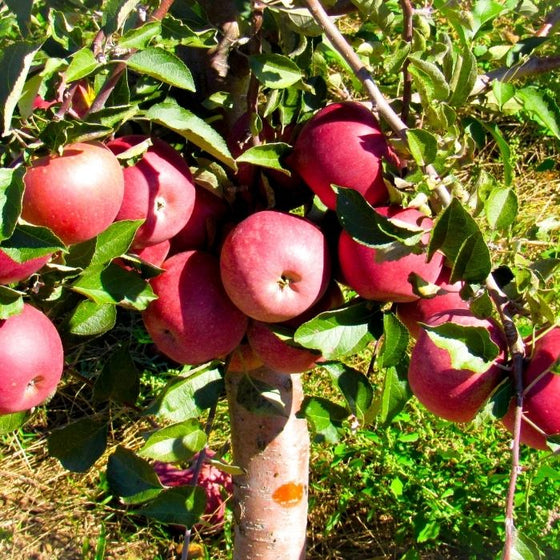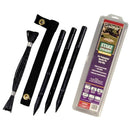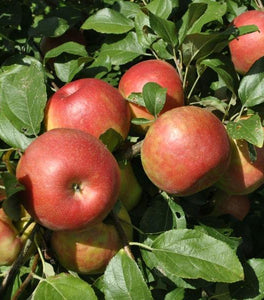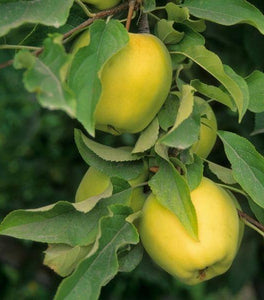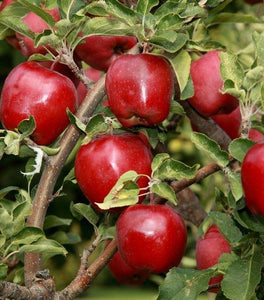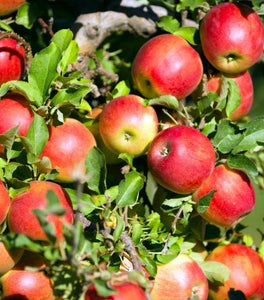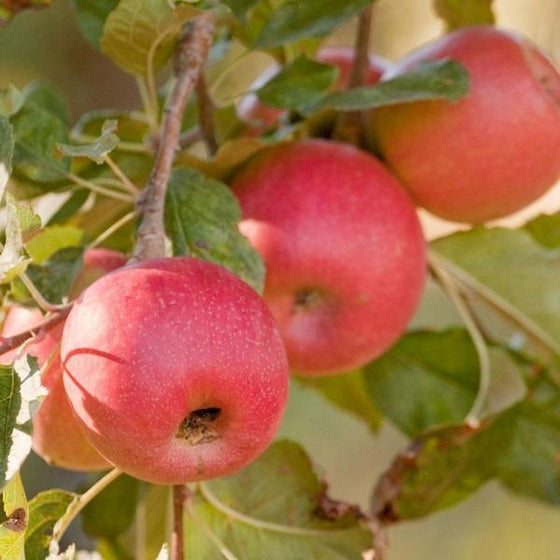
Images Depict Mature Plants
Pink Lady Apple Trees for Sale Online
The Pink Lady Apple Tree produces medium-size fruits with rich yellow skin blushed with soft pink. The fruit has a unique flavor that starts off tart, followed by the perfect amount of sweetness, making it a great addition to pies!
Best of all, the white flesh resists turning brown when cut making it perfect for lunch boxes and snacks. Originating in Western Australia in 1973, Pink Lady trees prefer plenty of sun and well-drained soil. In late October through November, it’ll reward you with early pink flowers and delicious late-season fruit.
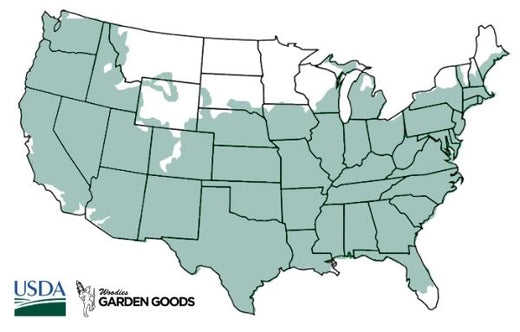
| Hardiness Zone: | 5-9 |
|---|---|
| Mature Height: | 15 to 20 feet |
| Mature width: | 12 to 15 feet |
| Classification: | Broad leaved deciduous tree, spring flowering |
| Sunlight: | Full sun |
| Habit: | Spreading, umbrella shaped canopy |
| Foliage: | Dark green |
| Fruit Color: | Blush pink and yellow |
| Pruning Season: | Late winter |
| Soil Condition: | Any well-drained soil |
| Water Requirement: | Water well until established |
| Uses: | One of the best apples for eating fresh or storing |
How to Care for Pink Lady Apple Tree
Before you buy a Pink Lady Apple Tree, make sure to read about the recommended care instructions to keep this plant healthy and flourishing.
How do I plant my Pink Lady Apple Tree
We suggest when planting your newly purchased Pink Lady Apple Tree that you dig a hole twice as wide as the root system but not deeper. Depending on the quality of your existing soil you may need to add a locally sourced compost or topsoil to the back-fill soil. We do not recommend using straight topsoil or compost as a back-fill soil because more times than not these products will retain entirely to much moisture and will cause the root system to rot. Adding compost or topsoil will help the young feeder roots of Granny Smith Apple Tree to spread through the loose, nutrient rich soil, much easier than if you used solely the existing soil which more times than not will be hard and compacted. The most common cause of plant death after transplanting is planting the new plant to deep. That is why we do not recommend planting in a hole any deeper than the soil line of the plant in the pot. A good rule is that you should still be able to see the soil the plant was grown in after back-filling the hole.
What is the best mulch for a young Apple tree?
We highly recommend that you mulch your apple tree with either a ground hardwood mulch or a ground cypress mulch depending on your local availability. Any type of mulch will do but cypress or hardwood mulch will be of a higher quality and provide better nutrition overall as they breakdown. Mulching helps to keep weeds away which will compete with your new investment for water and nutrients. A 2 to 3-inch layer of mulch is sufficient but remember to take care not to cover any part of the young trunk of the tree with mulch. It's better to leave a one-inch gap of space between the mulch and the stem or trunk to not inhibit growth.
How often do I water my apple tree?
After back filling and lightly compacting the 50/50 mix of existing soil and compost give the Pink Lady Apple Tree a good deep watering. This is not to be rushed. Most of the water you put on the plant at first will run away from the plant until the soil is soaked. A general rule of thumb is to count to 5 for every one gallon of pot size. For example a one gallon pot would be watered until you count to 5 a three gallon pot would be 15 and so on. Check the plant daily for the first week or so and then every other day there after. Water using the counting method for the first few weeks. Gator Bags are a good investment that will help minimize the watering chore.
How much Fertilizer does a Pink Lady Apple Tree require?
Trees such as Pink Lady Apple Trees grow best if they are fertilized lightly in the spring once frost has passed with a well-balanced, extended-release, fertilizer such as Espoma Tree-tone. Fertilize Granny Smith Apple Trees again 6 to 8 weeks later to encourage heavier fruit set and faster growth of young trees. We recommend Bio-Tone fertilizer when planting.

